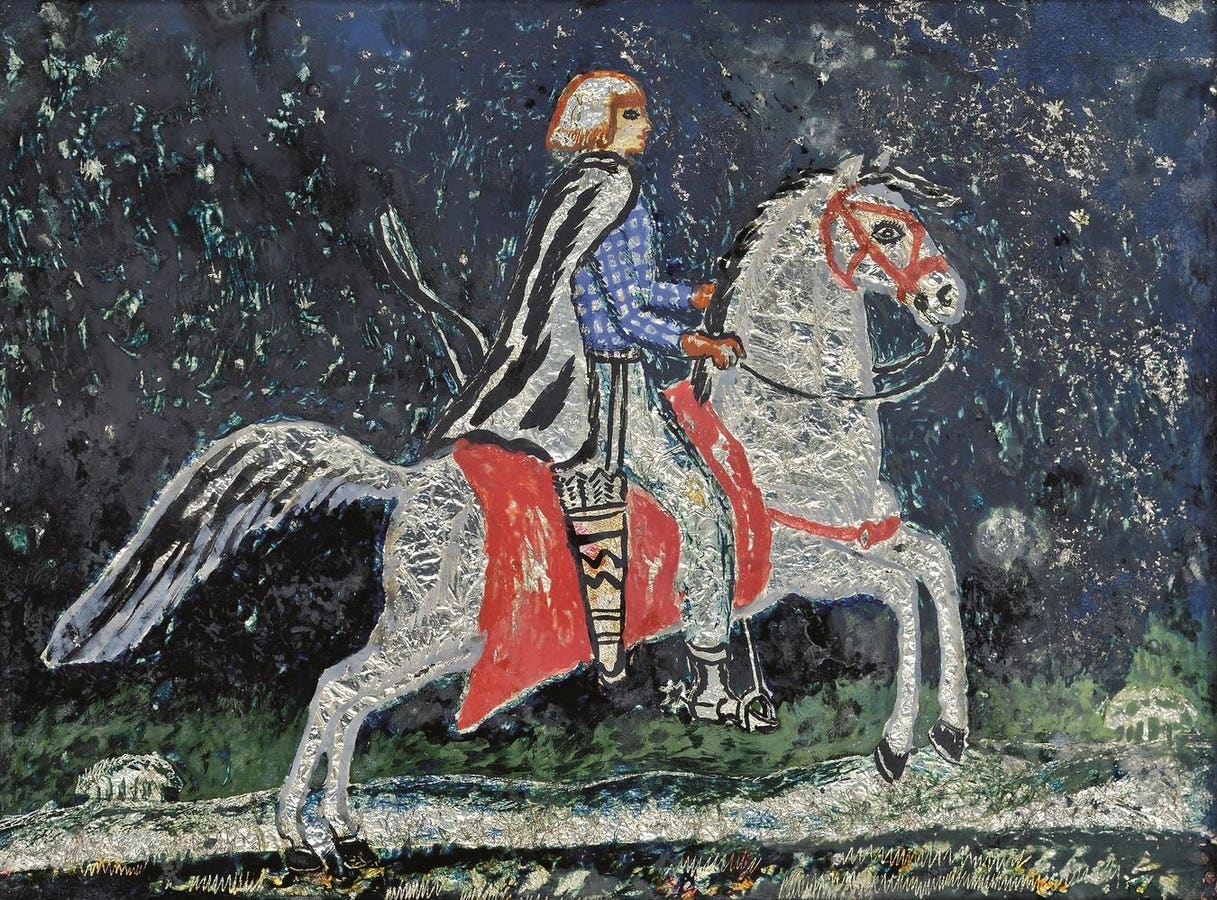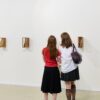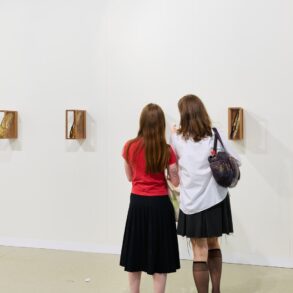
Compton Verney, a stately home turned art museum in Warwickshire, is set in 120 acres of Grade II listed classical parkland, designed by Lancelot “Capability” Brown, the most eminent landscape architect of the eighteenth-century. The property also houses the only Capability Brown designed chapel. In 1993, Sir Peter Moores, through the Peter Moores Foundation (PMF) bought the site, including the near-derelict mansion, and gifted it to the specially-created charitable trust Compton Verney House Trust (CVHT). Since then, Compton Verney has been welcoming visitors to its wide range of exhibitions, events and grounds, and this year it celebrates the 20th anniversary with the launch of its first ever sculpture trail and a number of ambitious exhibitions across its six galleries.
Sculpture Trail
Augustas Serapinas, Standtune at Compton Verney
Sculpture in the Park opens this week and runs until 2027. The glorious grounds of Compton Verney host works by eight contemporary artists drawn from around the world, including an important new commission. The grounds provide a unique landscape for artists to showcase their work; over 120 acres laid out by “Capability” Brown in 1768, featuring oak, ash and lime trees, wildflower meadows, a lake, bridges and plenty of wildlife.
Larry Achiampong’s stunning flgs at Compton Verney
The grouping of the sculptures is inspired by the history and setting yet also challenges the notion of the 18th century landscape design as a form of utopia. The sculptures are from leading UK-based artists such as Sarah Lucas, who often uses ordinary objects to challenge sex, class and gender. Permindar Kaur uses domestic items to question the meaning of ”home”, and British-Ghanian artist Larry Achiampong’s stunning series of flags with colors representing all the African countries, high on a hill, focuses on Pan African, future histories, speculative fiction and identity, both personal and communal.
Work from international artists includes London-based French artist Nicolas Deshayes who explores organic and synthetic texture through his work, and Lithuanian artist Augustus Serapinas, who draws on his country’s history and culture to produce works made from found material and borrowed objects.
Helen Chadwick, Piss Flowers
Two legendary figures in sculpture are also part of the park. A spider sculpture from the late French artist Louise Bourgeois guards the lawn near the house. Complementing this, from July until 6 October, there will be an extensive Louise Bourgeois exhibition in the galleries. Turner Prize-nominated British artist Helen Chadwick‘s intriguing group of twelve white enamelled bronze, Piss Flowers, makes a striking installation on the other side.
And, for the first commission for the sculpture park, Brazilian artist Erika Verzutti has created a new bronze work as part of her long standing Venus series which references the Venus of Willendorf. Discovered in Austria at the beginning of the 20th century, this artefact was made around 25,000 years ago, and is often regarded as the mother of all sculpture. Here, Venus reclaims the female gaze, positioning Venus as a powerful figure in the landscape.
Landscape Art
Accepted by the nation as part of the Turner Bequest 1856
Inside, in keeping with the landscape theme, is Landscape and Imagination: From Gardens to Land Art Landscape and Imagination: From Gardens to Land Art (until 16 June 2024). The exhibition explores how artists, designers and architects have re-imagined the natural landscape from the late 16th century to modern times. Featured are works by JMW Turner, Nicolas Poussin, Henry Moore, Barbara Hepworth, Charles Jencks, Anya Gallaccio, and David Nash among others.
The Women’s Art Collection
Paula Rego (1935-2022), ‘Ines de Castro’,
Also, essential viewing is a new show featuring Paula Rego, Dora and Leonora Carrington and Bridget Riley. A Spirit Inside (until 1 September 2024) is drawn from the Women’s Art Collection, Europe’s largest collection of art by women and The Ingram Collection. Some of the most important 20th and 21st century works by women are here and include well known women artists and those who deserve much greater recognition.
Barbara Hepworth (1903-1975), Sculpture with Colour and Strings, 1939,
Spanning 100 years, the works showcase a diversity of mediums including sculpture, paintings, film and collages. The genesis of the exhibition stems from a 1920 letter that Dora Carrington wrote to a friend, neatly explaining her reluctance to marry: “To marry him would not make it any better, because one cannot change a spirit inside one”. Carrington’s Iris Tree on a Horse (c.1920s), a shining colourful picture of female resilience and rebellion, is the starting point of an exhibition that poses the question of what an inner spirit is and investigates how women artists have sought to investigate and celebrate it.
Permanent Collection
In the permanent collection in the historic part of the museum, among the outstanding paintings by Lucas Cranach the Elder, Sir Joshua Reynolds and Canaletto is The Lamentation Altarpiece, three works by a “Franconian Master.” The Lamentation of Christ with a Group of Donors (1515) was originally the central panel of an altarpiece. It has long been thought that the wings would have been St Christopher carrying the Infant Christ and St George and the Dragon (both c.1515) from Compton Verney’s collection. The three had previously been part of a collection before their sale in 1993, and now have been reunited for the first time in over 30 years.
Practicalities
Compton Verney, Warwickshire CV35 9HZ
Opening times: Tuesday – Sunday 10am-5pm
Admission to the grounds and all exhibitions: £18/ £10 19-25 year olds / Free to under 18
This post was originally published on this site be sure to check out more of their content








